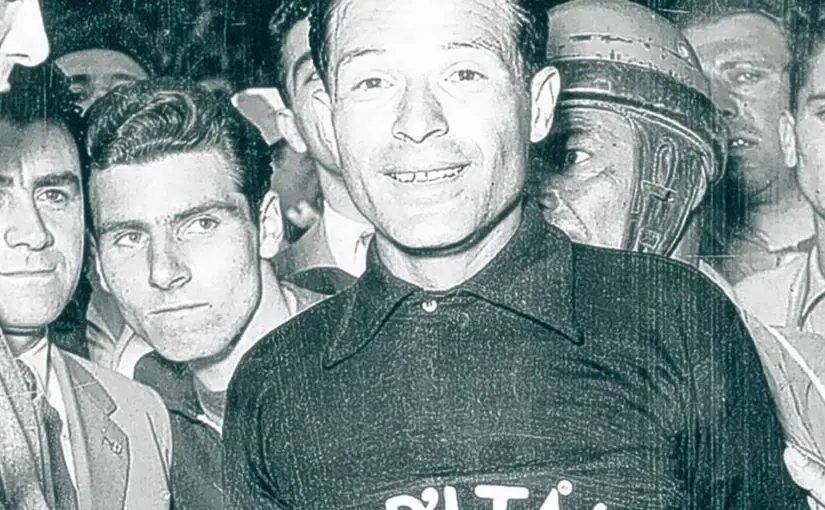In the 1946 Giro d’Italia, a new jersey has been introduced: The “Maglia Nera” (black jersey). It was awarded as a symbolic prize given to the last man to finish the race within the time limit.
But why the jersey was black? The riders chose the black because it was the color of the jersey worn by the soccer player Giuseppe Ticozzelli.
Maglia Nera
Ticozzelli was playing for Casale (L’Associazione Sportiva Casale Calcio S.r.l.), a soccer team founded in 1909 and became Italian champion in 1913-1914 season. The teams’ jersey was black (with a small, white star on it). Ticozzelli decided to ride the 1926 Giro as an independent. So, he was wearing his soccer teams’ jersey during the 1926 Giro d’Italia (the Casale Calcio team is still using the same black jersey).
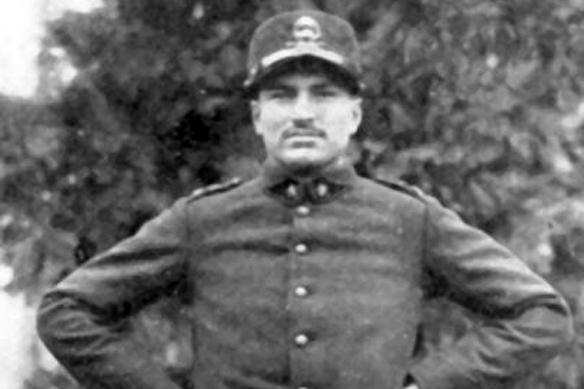
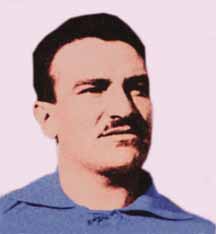
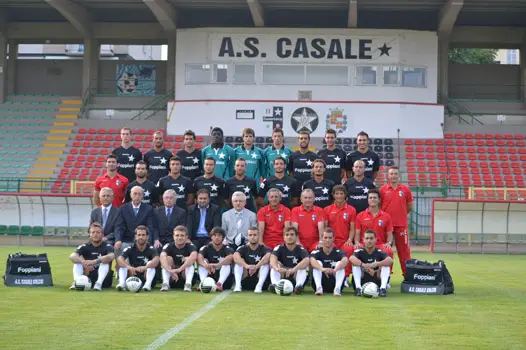
Ticozzelli rode only three stages and during each one, if the mod grabbed him, he would stop at a restaurant and calmly have a hearty meal, unworried about the race that was speeding down the road (see notes 1).
There was real competition to win this particular jersey. Especially noted are the struggles between Sante Carollo and Luigi Malabrocca, to see who could waste the most time. Each tried to lose more time than the other by hiding in bars, barns, and behind hedges, or even by puncturing their own wheels.
In 1948 the honor was awarded to the Tuscan Aldo Bini, who according to some journalists and fans of the time, stubbornly continued the race until the end, despite a broken right hand suffered in a mass crash and the suffering that especially in the mountain stages forced him to get off the bike and push it uphill. The special ability of the maglia nera, the black jersey was, in addition to not being “discovered”, to reach the finish directly within the maximum time (see notes 2)
Maglia Nera winners
The Maglia Nera (black jersey) was allocated between 1946 and 1951.
Year, Rider, Team, Finish Time (All the winners were Italian)
- 1946, Luigi Malabrocca, Milan-Gazzetta, 69h 41′ 54″
- 1947, Luigi Malabrocca, Welter, 121h 47′ 27″
- 1948, Aldo Bini, Benotto, 128h 59′ 43″
- 1949, Sante Carollo, Wilier Triestina, 135h 22′ 57″
- 1950, Mario Gestri, Bartali, 122h 28′ 37″
- 1951, Giovanni Pinarello, Bottecchia, 124h 37′ 48″
Did you notice the last winner? Yes, Giovanni Pinarello was the last winner of the Maglia Nera. He used the Black Jersey prize money to start his framebuilding shop which went on to equip several winners of the vastly more coveted maglia rosa (see notes 1).
The term “maglia nera” was later used in other contexts to indicate the bottom club in a league, often giving it a negative connotation.
In 2008 a similar “black number” was introduced, won by Markus Eichler of Team Milram.
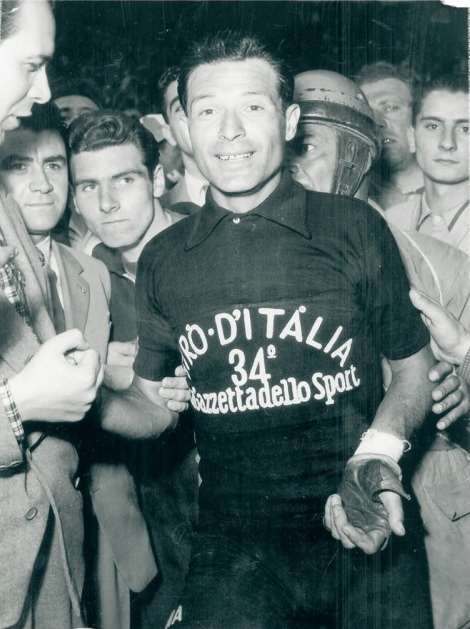
Pinarello was fortunate to be in a very economically prosperous area of Italy. This area was also synonymous with cycling and is known for its manufacturing excellence. His intuition told him to take advantage of the opportunity that presented itself and to be part of the world of team sponsorship. At first, he began by helping to promote and advertise for small local teams. He also aided in the survival of the teams with whatever they needed to be able to participate in the competitive and expensive world of racing.
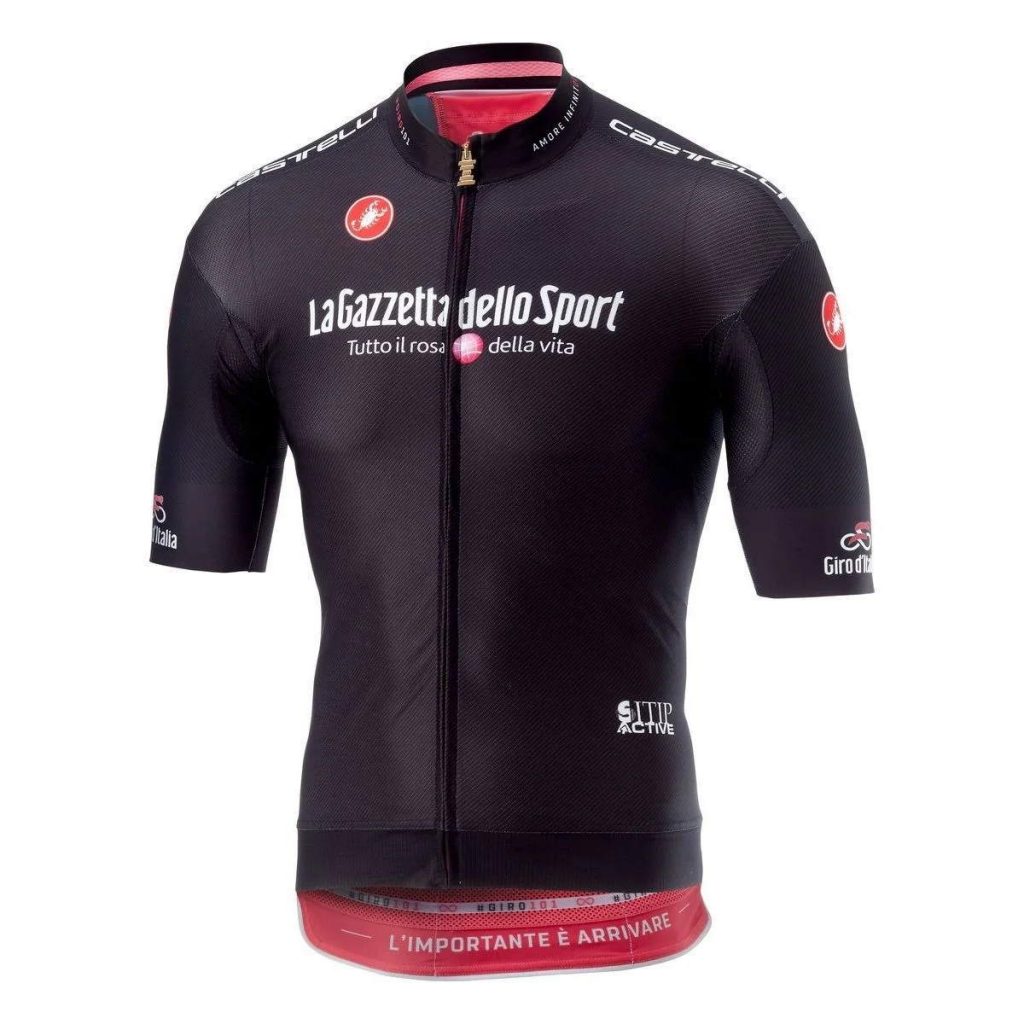
Related: Maglia Nera (Black Jersey) is back
The first team to participate in a national competition with a Pinarello bicycle was la Padovani, in 1957. This marked the beginning of sponsoring many bicycle teams. Sponsorship was a very important and crucial vehicle in the recognition and promotion of the Pinarello name. It also helped to promote his bicycle store in Treviso.
In 1960 came the sponsoring of the first professional team, the Mainetti, which developed and produced many champion cyclists of the area. In 1966 the success of Guido de Rosso truly made a difference for Pinarello in the professional world of cycling. His victory in the Tour d’Avenir in France put the Treviso on the cycling map. This was the first international victory for Pinarello.
The first victory at the Giro d’Italia in 1975 by Fausto Bertoglio (Jolly Ceramica team), was another very important victory that boosted the fame and substance of the Pinarello reputation. After many years of team affiliations in the professional field, this was an instant and sensational result from the Jolly Ceramica team since their partnership only began in 1974.
The final victory and other particular success at the Giro of 1975 were significant in putting the Pinarello name over the top. Until recently, Pinarello has never experienced such fame and notoriety. The name was now visible through the media having exposure through the television and began to be recognized for its exclusive artistic performance. The decade of the ’80s proved to be quite fruitful with many victories in the field of cycling.
In 1980 Pinarello affiliated itself with Inoxpran, the leader in the development of stainless steel (also known for its specialty kitchen accessories). Inoxpran was in part responsible for revitalizing the once victorious cycling athletes that made up the Jolly team. They began the season with very promising riders, and a very experienced team, captained by Giovanni Battaglin.
For the first time since Pinarello had begun sponsoring various professional teams, the Pinarello logo was finally seen on the team jersey as an official sponsor, alongside Inoxpran. This team was one of an extremely competitive caliber, which right from its beginnings was victorious in many races of international status. The year 1981 proved to be an extraordinary season for this powerhouse of a team. Among its numerous victories, they captured two of the most distinguished international races, the Vuelta di Spagna and the Giro d’Italia.
Another enormous boost to Pinarello’s popularity came in the 1984 Olympics. A U.S. rider by the name of Alexi Grewal took home the gold medal on a Pinarello bicycle. Throughout the years the Pinarello victories continued, making it possible for many successful partnerships. One of these teams was Banesto, of which the Spanish champion Miguel Indurain was a team member, made the Pinarello the team bicycle.
Indurain was just an amateur then but would ride a Pinarello to victories at five Tour de France’s, two Giro d’Italia’s, an Olympic victory, a world time trial championship, an hour record, and many other international victories.
With the recognition obtained at the Giro d’Italia with Indurain in ’92 and ’93, and even with the victory of Chioccioli in ’91, the victory that most stands out is the first Tour de France win in 1988 with Pedro Delgado of the Reynolds team (later called Banesto).
It was during Pinarello’s partnership with many professional teams that the Pinarello name became associated with many important Italian teams, such as the Del Tongo team from ’88 to ’91 and the Mercatone Uno team from ’92 to ’95. Among the many victories of the above-mentioned partnerships, the one that remains the most important is the one formed in ’91 with Chioccioli of the Del Tongo.
In addition to the long Tours, the numerous and extraordinary successes of Cipollini, the most internationally well-known “sprinter” have greatly contributed to the popularity of the Pinarello name and deserve to be remembered.
Cipollini has in fact, together with Indurain, been a famous testimonial of Pinarello’s advertising campaigns. More recently, the success of the current teams, particularly Telekom, Brescialat, and Banesto, should be mentioned.
In 1996 and 1997, Telekom achieved remarkable results, becoming one of the most well-known teams in the world, with unexpected successes including the victory of Riis and the second place of Ullrich in the Tour de France in 1996.
The success of Pinarello has been reconfirmed in the seasons 1997 with the 6th consecutive victory in the Tour de France and in 1998 with the second place of Jan Ullrich always in the Tour de France (see notes 3).
Pinarello was the most successful bike supplier of the pro-peloton at the Tour de France 2013. Chris Froome of Team Sky won the yellow jersey, and Nairo Quintana of the Movistar team won both polka dot jersey of the KOM (King of the mountains) and white jersey of “the best young rider” classifications on Pinarello Dogma bikes. Pinarello also produced a special edition to honor the polka dot jersey.
We lost Giovanni Pinarello on September 4, 2014.
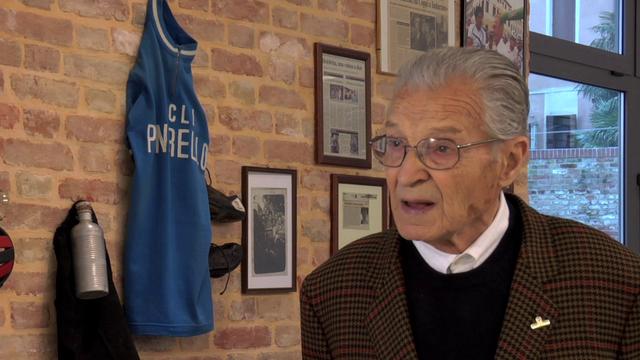
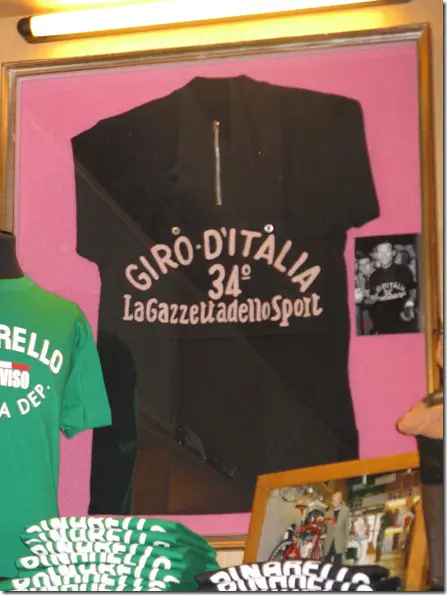
Sources
- The Story of the Giro d’Italia, Volume One; McGann, B&G; McGann publishing; Cherokee Village; 2011
- Maglia Nera on Wikipedia
- Pinarello history on pinarello.com
- BikesOnline Carlsbad: Your Premier Cycling Destination in San Diego County - June 15, 2025
- Top 19 fastest Paris-Roubaix editions - April 14, 2025
- Fausto Coppi in Africa [A Very Rare Photo] - January 4, 2025
